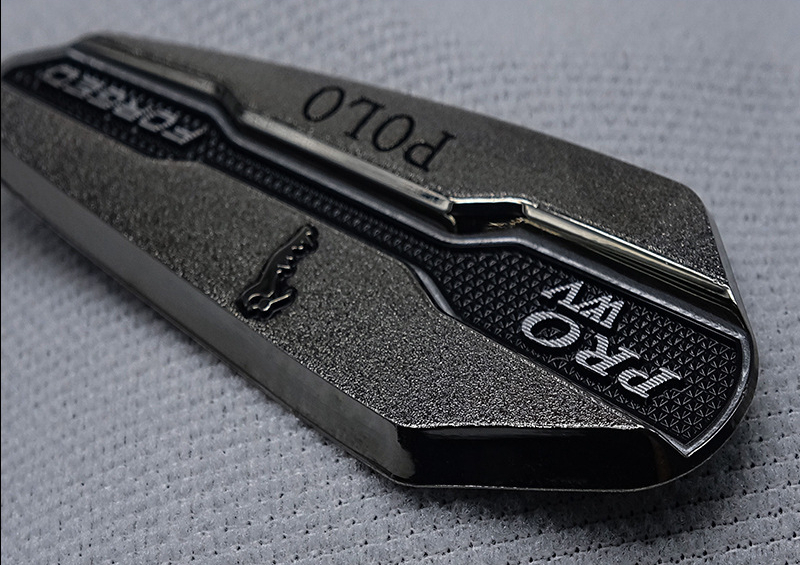Chemical Etching on Aluminum: Creating Unique Patterns and Textures
Introduction
Aluminum is a versatile metal known for its corrosion resistance, lightweight properties, and excellent formability. In die casting and precision manufacturing, chemical etching is increasingly used to add surface detail, create micro-patterns, or apply functional textures to aluminum parts. Unlike mechanical machining or laser engraving, chemical etching uses controlled chemical reactions to dissolve targeted areas of the metal, enabling high-precision, low-distortion results.
This technique is particularly valuable for components in the electronics, aerospace, automotive, and consumer product sectors, where functional performance and visual appeal matter. At Neway, we integrate chemical etching into our advanced post-processing solutions for various aluminum die casting alloys, including A380, A360, and AlSi12.
What Is Chemical Etching?
Chemical etching, or chemical milling or photochemical machining (PCM), is a subtractive process that selectively removes metal from a surface by applying an acid or alkaline etchant. A photoresist mask defines the areas to be etched, allowing intricate designs or uniform textures to be created without mechanical force.
Process Steps:
Cleaning and Surface Preparation
Mask Application (photoresist or stencil)
Exposure and Development (for photoresist)
Etching in Acid or Alkaline Bath
Rinse and Mask Removal
The result is a clean, repeatable surface pattern or micro-feature with tolerances typically within ±0.025 mm and surface roughness ranging from Ra 0.4–1.6 µm, depending on alloy and depth.
Benefits of Chemical Etching on Aluminum
Advantage | Description | Application Impact |
|---|---|---|
Precision Detailing | Capable of fine lines and geometric patterns | Ideal for logos, branding, or microfluidic structures |
No Mechanical Stress | No tool pressure or thermal distortion | Suitable for thin walls or delicate features |
Uniform Texture | Reproducible matte, satin, or functional roughness | Used for grip surfaces or light diffusion |
High Versatility | Compatible with curved, irregular, or flat parts | Applied to both decorative and technical components |
Chemical etching is often used to achieve finishes that simulate bead blasting, brushing, or sand texture—without physical abrasion that can degrade fine features or introduce stress.
Suitable Aluminum Alloys for Etching
While most aluminum alloys can be chemically etched, casting alloys with high silicon content—such as A380—require carefully controlled etching solutions to avoid uneven pitting. Alloys with lower silicon or magnesium content generally produce more uniform etching profiles.
Alloy | Silicon Content | Etchability | Typical Use |
|---|---|---|---|
A380 | 8.5–11.5% | Moderate (requires controlled etchant) | General-purpose structural and decorative parts |
A360 | 9.0–10.0% | Good | Corrosion-resistant enclosures |
AlSi12 | ~12% | Moderate to Good | Thin-wall and lightweight parts |
Alloys should be properly cleaned and free of machining oils or oxide layers before etching to ensure consistent pattern transfer and surface definition.
Functional and Aesthetic Applications
Chemical etching is widely used to create both functional surfaces and decorative elements:
Branding and Identification: Company logos, part numbers, or QR codes etched directly onto aluminum surfaces
Grip and Texture Enhancement: Matte patterns to increase surface friction for hand-held or tool-operated parts
Optical and Display Applications: Anti-reflective finishes and light-diffusing patterns on reflective surfaces
Pre-Coating Preparation: Slightly textured surfaces to improve adhesion for painting, powder coating, or anodizing
For example, an etched aluminum electronic housing with a micro-dimple pattern can reduce glare, hide fingerprints, and improve tactile appeal—ideal for consumer-facing components.
Integration with Other Surface Treatments
Chemical etching can be used in conjunction with other finishing and protective processes:
Polishing: Performed before etching to control baseline surface uniformity
Anodizing or Chromate Conversion: Etched surfaces retain oxide coatings better due to increased surface area
Painting or Printing: Etched designs serve as recessed templates for multi-color paint or laser marking
Neway’s surface treatment workflow often schedules chemical etching between cleaning/polishing and final finishing steps to preserve feature accuracy and surface consistency.
FAQs
What minimum feature size can be achieved through chemical etching?
How does chemical etching differ from laser engraving or mechanical engraving?
Can etched aluminum parts be anodized or powder coated afterward?
Is chemical etching suitable for large-volume production?
How does etching affect the corrosion resistance of aluminum parts?

